7 Essential Tips to Troubleshoot and Fix Pool Pump Problems
August 18th, 2024
August 18th, 2024
Summer's heat often beckons us to the cool refuge of a backyard pool, promising a splash of relief from the relentless sun. Yet, the joy of a refreshing swim can quickly fade when the pool pump, the heart of any swimming pool system, decides to take an unexpected break. The silence of a non-working pump can be unsettling, especially when crystal-clear water is at stake. I remember my own frustration one summer afternoon, poolside with friends, only to be interrupted by the infuriating realization that the water was stagnant because the pump had failed.
Understanding the intricacies of pool pump issues can feel like navigating a labyrinth, but it needn't be overwhelming. Most problems can be pinpointed with a bit of patience and the right guidance. From peculiar noises that suggest something might be amiss, to unexpected shutdowns that can spell trouble, each symptom tells a story about what's happening beneath the surface.
In this guide, you'll find seven essential troubleshooting tips designed to unravel the mysteries of your pool pump woes. Think of it as a toolkit, equipping you with the knowledge to tackle common issues head-on. Whether you're a seasoned pool owner or a newbie amazed by the complexities of pool maintenance, these tips aim to restore your pump’s pulse, ensuring your pool remains the haven of joy it was meant to be.
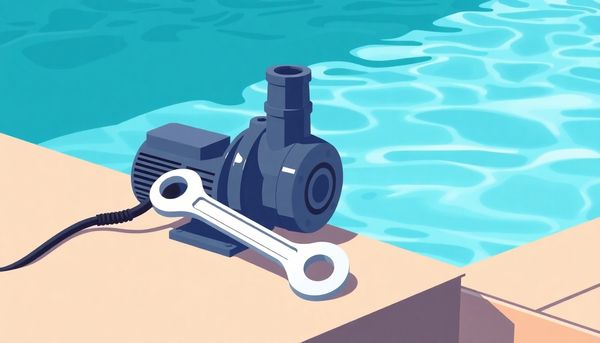
When faced with a pool pump that's not quite up to snuff, one of the first things to examine is whether your pump is properly primed. The task may seem daunting, but understanding pump-priming issues can often lead to a quick and efficient fix. A pump that loses its prime is typically struggling due to disrupted suction or an interrupted water flow. This issue might arise from blockages, a grimy pool filter, or pesky air bubbles trapped in your system.
Think back to a time when you've noticed your pump behaving oddly, perhaps making more noise than usual or cycling inefficiently. Often, these are symptoms of underlying priming issues. Start by inspecting the pump basket and skimmer for debris. Removing accumulated leaves or dirt can sometimes restore the necessary suction. Additionally, a thorough examination of all seals and o-rings is crucial. Any worn or cracking seals should be replaced to ensure a watertight system.
Another trick involves using shaving cream to pinpoint elusive air leaks. Apply a layer over joints and connections; any indentation in the cream signals a leak, which could be responsible for losing prime. If these steps don’t resolve the issue, it might be worth considering deeper complications, like worn impellers or even more extensive system reviews. Ultimately, maintaining a vigilant watch over these components can save you from prolonged pump troubles and keep your pool sparkling and refreshing.
When your pool pump loses its suction mojo, the tranquility of a swim can quickly turn into a muddied mess. The culprit often lies in the simplest of oversights or the fiercest of blockages. Start by taking a closer look at the impeller, a hidden maestro of flow. Power down the pump, unscrew the housing, and with careful hands, extract the impeller. Odds are, debris has made its home here, causing a traffic jam in your water system. Clear it out, reassemble, and see if your pump regains its vigor.
Next, consider the pump basket, often an unsung hero in the filtration process. An overflowing basket restricts water flow, yet a swift cleaning might just restore the pump's former glory. Empty the basket and ensure no unnoticed blockages have crept into the lines.
Air leaks are sneaky saboteurs. Inspect the pump lid and o-rings, applying a generous helping of pool lube to coax a tighter seal. For those elusive escapes, a time-tested trick involves smearing shaving cream over suspected areas; where it vanishes, air is entering.
Lastly, tune your ears to the pump's symphony. A rattling motor might crave a more free-flowing water path, while a high-pitched whine could signal weary bearings. In such cases, a gentle tap with a rubber mallet can sometimes offer a temporary fix. If your efforts exhaust all possibilities, don’t hesitate to enlist professional expertise to bring your pool pump back to life.
When dealing with a pool pump that's not quite pulling its weight, identifying and sealing leaks can often be the unsung hero of solutions. Just last summer, my own pump was more frustrating than a mosquito at a barbecue. I discovered that the culprit was a sneaky air leak disrupting the pump's ability to maintain suction. Turns out, these leaks can be subtle, showing up as tiny bubbles in the pool or, more annoyingly, a pump that refuses to stay primed.
Begin your detective work by inspecting the pump housing, pipe joints, and o-rings. These are common suspects when it comes to leaks. Sometimes, the tiniest crack or a brittle seal can allow air to infiltrate the system. Don’t skimp on checking the lid and its o-ring; a clean, lubricated seal here is crucial for preventing air intrusion. A handy tip from the trenches: apply a liberal amount of shaving cream to the joints and seals. If there’s a leak, the cream will dimple, pinpointing the problem area.
Once you’ve identified the leaky spot, addressing it swiftly is key. Replace any worn or damaged seals with new, robust ones. For threads and joints, a good-quality thread sealant works wonders. Remember, even with the best DIY skills, there's no shame in calling a professional if the issue persists beyond your comfort level. After all, a well-sealed pump not only runs smoother but extends the life of your entire pool setup, leaving you with more time to enjoy those crystal-clear waters.
A familiar summer sound is the hum of your pool pump working diligently to keep your water crystal clear. But when that hum turns into a disconcerting racket, it's time to roll up your sleeves. Addressing motor and noise issues is pivotal in maintaining your pump's health and, ultimately, your pool's cleanliness.
Start with the basics: inspect the motor for any unusual sounds. Rattling could suggest a simple blockage in the plumbing line, where debris might be causing chaos. A quick clean could be your ticket to serenity. On the other hand, a high-pitched screeching might indicate that the bearings have seen better days. While a professional touch is ideal for replacing them, a gentle nudge with a rubber mallet sometimes works wonders. Just be sure to tread lightly—your pump is not a drum kit.
A persistent buzz or hum usually points to an electrical hiccup within the motor. Power is likely reaching the motor but struggling to kick it into action. This could be due to a faulty capacitor or a rusty buildup. A visual inspection can help pinpoint the culprit; a stuck impeller might also be to blame. In some cases, giving the pump a thorough once-over and lubricating necessary parts can breathe new life into it.
In tackling these motor issues, you may just find that the symphony of your backyard returns to its harmonious rhythm. And if these efforts don’t quiet the disturbance, remember: sometimes, professional intervention is the best path to peace.
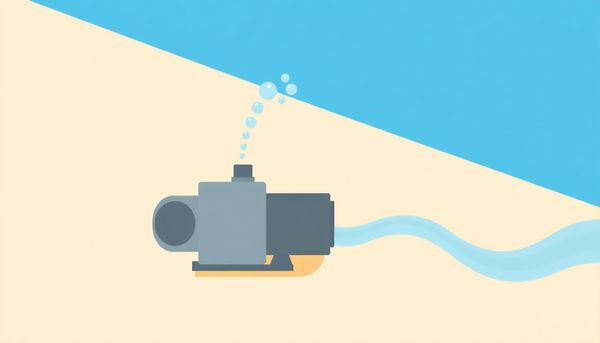
Sealing leaks with precision often transforms a frustrating pool maintenance task into a straightforward fix. Imagine yourself standing by your pool, ready to enjoy a sunny afternoon, only to find an annoying puddle forming around the pump. It’s time to play detective. Begin by inspecting the O-rings and seals, as these small components are notorious for causing leaks. Over time, they wear out due to constant exposure to chemicals and weather changes, losing their ability to maintain a snug fit.
I remember a time when my own pool pump mimicked a small fountain, much to my dismay. Armed with a little knowledge and a tube of silicone lubricant, I inspected the seals. The culprit was a tiny crack in the shaft seal, which allowed water to escape. After replacing it with a new one, the puddle vanished, and I was back to poolside relaxation.
If you're not keen on replacing seals immediately, a quick trick involves applying shaving cream around suspect areas. The cream will get sucked into any existing leaks, providing a clear visual cue. This method is both efficient and surprisingly effective, acting as a temporary fix until a more permanent solution can be applied.
Finally, never underestimate the power of a well-documented guide or tutorial. Detailed resources can empower you to tackle even the most puzzling pool pump issues. However, if the leaks persist or you're out of your depth, a professional's expertise is just a call away.
Sometimes, the pool pump decides to play hide-and-seek with its problems, leaving you guessing where to start. Begin by observing if your pump refuses to draw water effectively; this could hint at an interrupted suction, possibly due to a blocked line or a clogged filter. If your pump behaves like it's inhaling more air than water, suspect leaks. A classic trick: spread shaving cream around joints and connections; an indent will reveal a sneaky air leak.
When the pool pump sounds more like a rock band than a machine, it's time to investigate. A rattling noise might simply mean poor water flow, but a high-pitched screeching could signal worn bearings. While a rubber mallet might persuade a stubborn motor to cooperate momentarily, it’s often wiser to call on a professional for a bearing replacement. Meanwhile, a persistent humming or buzzing often indicates power issues, like a faulty capacitor or motor rust.
For those with a flair for DIY, regularly inspect the impeller for tangles of leaves or debris. This involves turning off the pump, unscrewing the housing, and gently cleaning the impeller. If your pressure gauge consistently reads low despite your best cleaning efforts, an aging impeller may be the culprit. When a persistent leak persists, even after part replacements, it might be an omen that your pump is nudging towards retirement. Ultimately, while some fixes are straightforward, knowing when to seek professional help or invest in a new pump ensures your pool remains a pleasure, not a chore.
The heart of a pool's circulation system, the pump, must operate seamlessly to ensure clear and pristine water. However, when leaks appear and performance dwindles, faulty seals often bear the blame. My own pool pump saga began one sunny afternoon when I noticed a small puddle forming at the base. After a few investigative twists and turns, it turned out the culprit was a worn-out seal.
Seals, particularly the shaft seal, can wear down due to friction and exposure to chemicals. This wear compromises the pump's ability to maintain water pressure, leading to leaks and reduced efficiency. A straightforward solution lies in replacing these seals. Start by turning off the pump and disconnecting its power source—safety first. Then, carefully disassemble the pump housing to access the seals. It's crucial to inspect the o-rings and thread sealant for any signs of damage or brittleness.
Replacement seals are typically inexpensive and can be sourced from most pool supply stores. When installing new seals, apply a liberal amount of lubrication to the o-rings, ensuring a snug, long-lasting fit. This not only prevents leaks but also extends the life of the seals themselves. Reassemble the pump, reconnect the power, and test for leaks.
Replacing faulty seals might seem daunting at first, but with a bit of patience and the right tools, it's a manageable task that saves you from potential headaches down the road. And remember, if you're ever in doubt, a professional's expertise is just a call away.
Boosting the efficiency of your pool pump is like giving your heart a little extra care—a small tweak can make all the difference. One crucial tip is to regularly clean and maintain the pump basket and skimmer. When leaves and other debris clog these areas, your pump has to work overtime, which can lead to overheating and eventual breakdowns. It’s akin to trying to breathe through a blocked nose—uncomfortable and unsustainable.
Another vital step is to keep a keen eye on the pool's water level. If it drops too low, the pump may start sucking in air instead of water, causing it to lose prime. You wouldn’t want your pump to be gasping for water, much like a fish out of its bowl. Ensure the water level sits about halfway up the skimmer opening for optimal performance.
Consider upgrading to a variable-speed pump if your current model is a bit outdated. These pumps adjust their flow rate based on your pool's needs, in contrast to single-speed pumps that run at maximum capacity regardless of necessity. This not only saves energy but also prolongs the life of your pump by reducing undue stress.
Finally, don't underestimate the importance of regular inspections for leaks and worn seals. A small crack or a failing o-ring can escalate into major problems, much like a tiny leak in a dam. Catching these issues early keeps your pump running smoothly and your pool ready for endless enjoyment.
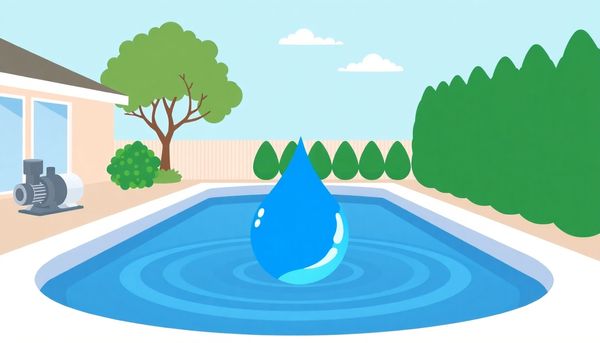
Sometimes, the secret to a happy pool lies in unblocking the paths that keep the water flowing smoothly. Picture the pool pump as the heart of this aquatic system—any blockage could lead to a critical dysfunction. Start by focusing your attention on the impeller. This small yet mighty component often falls victim to leaves, twigs, or other debris. Disconnect the power, then carefully dismantle the pump housing. You'll be surprised at what a little cleaning can do; simply remove the debris, and reassemble the parts with precision.
Next, examine the skimmer and pump baskets. These components are like the lungs of your pool system, filtering out unwanted debris. If neglected, they can suffocate your pump. Regularly empty and rinse them to keep the flow unrestricted. Once, during a particularly stubborn blockage in my own pool, I discovered the culprit was a stray tennis ball that had somehow wedged itself into the skimmer. A simple removal restored my pump to its former glory.
Don't overlook the importance of inspecting the pool's plumbing lines. Over time, air leaks and cracks can sneak in, disrupting the water's journey. Listen for any unusual gurgling sounds—they often signal trapped air within the system. Applying a bit of shaving cream around suspect areas can help detect leaks; the cream will get sucked into any holes, revealing the breach. By diligently clearing these pathways, your pump's performance will improve vastly, leading to a more enjoyable swimming experience.
When the trusty hum of your pool pump falters, it's tempting to panic. But often, these issues are more straightforward to handle than they seem. Picture yourself as a pool detective, keenly observing and investigating each clue.
Start by listening to the sounds your pump makes. A rattling noise might suggest obstruction in the plumbing lines, while a high-pitched screech could indicate worn bearings. If you find the latter, resist the urge to dismantle without experience. Instead, a gentle tap with a rubber mallet might do the trick temporarily, but it’s wise to consult an expert.
If your pump seems to be struggling with air, check for leaks or cracks in the fittings. My neighbor once discovered a sneaky leak using an unconventional method—spreading shaving cream over suspected areas and watching where it indented. This simple trick saved him from an expensive service call.
For flow issues, inspect the filter and pump basket. A clog here is a common culprit. Turn off the pump, take apart the housing, and clear out any debris. A buddy of mine found an entire family of leaves jammed in his impeller, causing havoc.
Remember, consistent issues might point to larger problems. If the pressure gauge remains stubbornly low despite clear pathways, the impeller could be the villain, wearing down over time. In such cases, replacing the impeller or the whole pump might be the best investment for a hassle-free summer. And when in doubt, don't hesitate to call in the pros.
Ever noticed a small puddle forming around your pool pump? It might not seem like much, but over time, even a minor leak can morph into a major headache. Pool pumps are vital for maintaining crystal-clear water, and ensuring their longevity often comes down to sealing leaks effectively. A close friend once faced persistent issues with her pump, and it all stemmed from a tiny, overlooked crack in the shaft seal. Once resolved, her pump ran smoothly for years.
Begin by inspecting all potential weak points, including o-rings and the impeller housing. These components endure constant pressure, making them prone to wear and tear. Lubricate o-rings generously with a silicone-based lubricant. This not only enhances the seal but also extends their lifespan, sparing you future repairs. A neat trick is using shaving cream to detect elusive leaks. Spread it over suspect areas, and if there's a breach, the cream will reveal an unmistakable indentation.
Replacing worn seals is straightforward and can be done with basic tools. However, if you're hesitant about diving into the mechanics, consulting a professional might be the best course of action. It's tempting to ignore small drips, but addressing them promptly can prevent costly replacements down the line. Remember, a well-sealed pump isn't just about avoiding leaks; it's about boosting efficiency and ensuring your pool remains a sparkling oasis throughout the seasons.
In the quest to maintain a pristine pool, ensuring optimal water-flow efficiency is essential. A well-functioning pump not only keeps the water sparkling but also prolongs the life of your equipment. Start by examining the pool's filtration system. A dirty filter can significantly impede water flow, much like trying to sip a thick smoothie through a narrow straw. Regularly cleaning or replacing the filter can make a noticeable difference.
Next, focus on the pump's impeller. It's not uncommon for debris like leaves, small twigs, or even tiny pebbles to sneak in and lodge themselves here. This can severely restrict water movement. Removing the pump housing to clean the impeller may sound daunting, but trust me, it's a manageable task that pays off. Once, I found a stubborn clump of algae clinging to mine, and after a quick scrub, the water flow improved dramatically.
Also, consider the role of air in your system. Air leaks often disrupt the smooth operation of a pump, leading to inefficiencies. Checking for air leaks involves inspecting all connections and fittings, ensuring they are secure and intact. A simple test with soapy water can reveal a hidden leak by forming bubbles at the site.
Addressing these potential problem areas can enhance water circulation, reduce energy costs, and keep your pool in top condition. If troubleshooting seems overwhelming, never hesitate to enlist the expertise of a professional to ensure everything runs smoothly.
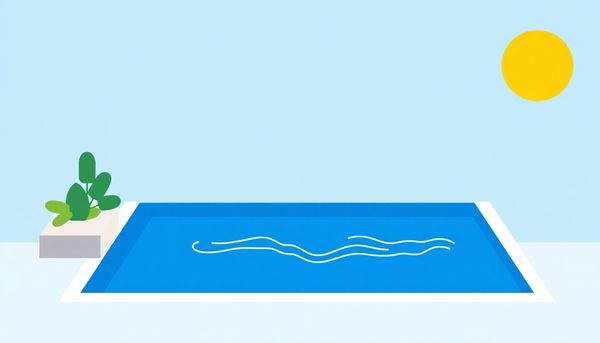
When your pool pump starts serenading you with unusual noises, it's like your car's engine purring a little too angrily. Each sound tells a story—some more concerning than others. That rattling noise might suggest your pool pump is gasping for better water flow. Before you panic, check for any blockages in the plumbing lines and inspect for sneaky air leaks. My friend once found a small pebble stuck in her impeller, and clearing it out restored peace and quiet instantly.
Screeching, on the other hand, could mean your pump bearings have seen better days. While disassembling the motor to replace these bearings is a task best left to the professionals, there’s a small trick that might offer temporary relief. Gently tapping the motor with a rubber mallet or the sole of a shoe can sometimes nudge it back to life. Careful, though—precision over power is key here.
Buzzing or humming signals that power is reaching the motor but struggling to get it running. This might point to a faulty capacitor or rust buildup. Once, during a particularly humid summer, rust caused my pump grief until a local handyman helped clean it up. Additionally, ensure the impeller isn’t jammed with debris. By addressing these auditory clues, you not only extend your pump's lifespan but also save yourself a poolside headache.
Every pool owner knows the frustration of a misbehaving pump. That steady workhorse suddenly sputters, leaving a murky oasis in its wake. But before panic sets in, consider some common culprits and simple fixes.
When suction falters, the pump might need priming. Sometimes, a blockage, possibly a forgotten leaf or dirt-clogged filter, disrupts the water flow. Inspect the pump basket and filter closely—often, a quick clean is all it takes. If air sneaks into the system, hunt for leaks. A neat trick? Smear shaving cream over suspected spots; the cream will suck in where air escapes, revealing the problem area.
Leaky pumps can often be traced back to worn-out seals. Check the o-rings around the impeller housing and the shaft seal. These rubber components wear over time but applying silicone lubricant can extend their life. If a persistent leak defies such remedies, it could be time for new seals.
Strange noises signal deeper issues. A rattling sound suggests airflow is restricted, so ensure no obstructions clog the pipes. However, a high-pitched squeal means bearings might be shot. Though it sounds counterintuitive, a gentle tap with a rubber mallet can temporarily coax the motor back to life.
Finally, low pressure indicates potential clogs in the skimmer or pump strainer. If cleaning doesn’t resolve it, the impeller's age may be showing. For those moments when solutions elude you or tasks seem daunting, a professional’s touch can restore tranquility to your backyard retreat.
No one enjoys finding a puddle where it's not supposed to be, especially near the pool pump. Leaks can make maintaining your oasis a real headache, but fortunately, they’re often straightforward to fix with replacement parts. Recognizing that a pump leak usually signals a seal failure is a smart first step. These seals—such as o-rings or shaft seals—are crucial in keeping water where it should be. Over time, they wear out, but replacing them is often more affordable and simpler than you might think.
Start by inspecting the pump for visible cracks or worn-out seals. A handy trick is to apply shaving cream on suspect areas; any leaks will cause the cream to leave an indent, pinpointing the trouble spot. If you find a damaged seal, head to your local pool supply store. Most carry a variety of seals and o-rings, and many staff members are knowledgeable enough to help you find exactly what you need.
Replacing these parts is often as simple as unscrewing a few bolts and slipping the new seal into place. Always ensure you use a generous amount of pool-safe lubricant on new o-rings to enhance their lifespan and effectiveness. For those who aren't quite ready for do-it-yourself repairs, bringing in a professional can save time and hassle. Remember, addressing leaks promptly not only prolongs your pump’s life but also keeps your pool shimmering and inviting.
Water-flow efficiency is the unsung hero of a well-functioning pool pump. When water doesn't glide smoothly through the system, it can lead to a cascade of issues. A personal tale may illustrate this best: last summer, I noticed my pool water was sluggish and not circulating as it should. It turned out an overzealous layer of leaves had turned my skimmer basket into a fortress. This lesson taught me the importance of regular inspections.
Begin by examining your pool's skimmer basket and pump strainer for debris. Leaves, twigs, or even small toys can create unexpected blockages that compromise water flow. Next, confirm that your filter is clean. A grimy filter can reduce efficiency, causing your pump to work harder than necessary. Rinse or replace filters regularly to keep the water pathway clear.
Another critical area to inspect is the pump's impeller. To do this, switch off the pump, unscrew the housing, and gently remove the pump assembly. You may be surprised to find clogs of hair or dirt wrapped around it. Carefully clean out any gunk, then reassemble the pump.
Finally, don’t overlook air leaks. These pesky invaders can drastically reduce efficiency. An old pool pro trick is to spread shaving cream on suspected areas like fittings or seals. If the cream gets sucked in, you've found your leak.
Remember, maintaining water-flow efficiency not only enhances your pool's operation but also extends your pump's life. Keeping a keen eye and a proactive approach can save you time and money, ensuring your pool remains a source of relaxation, not frustration.
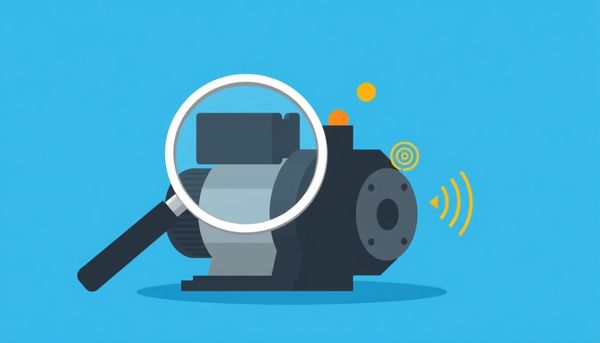
When your pool pump seems to be misbehaving, it might be time to take a closer look at its worn-out parts. Often, the culprits behind pump troubles are components that have quietly reached the end of their lifespan. Each part of your pump, from the o-rings in the impeller housing to the seals on the motor shaft, plays a crucial role in keeping your system watertight and functional.
Begin by scrutinizing the seals. Over time, seals can degrade due to constant exposure to water and chemicals. When these seals begin to fail, your pump may start leaking or lose efficiency. Replacing them promptly ensures that your pump remains in top condition, preventing more significant issues down the line. A handy tip: applying a bit of lubricant to new seals can extend their life and improve their performance.
Next, check the bearings if you hear unusual noises. A high-pitched screeching sound often indicates that the bearings are worn out. While replacing bearings can be a bit technical, it's a doable task for those who enjoy tinkering. However, when in doubt, calling a professional is always a wise move.
Finally, don't neglect the impeller. It’s the heart of your pump, and any debris caught within can cause severe wear over time. Regularly inspecting and cleaning the impeller can prevent further damage and prolong the life of your pump. Remember, small maintenance today can save hefty repair costs tomorrow.
When your pool pump starts losing its suction mojo, things can get tricky, and your pool might feel more like a pond. A friend once faced a similar dilemma—her pool pump seemed to be gasping for breath. The culprit? A simple leaf stuck in the impeller. So, begin your detective work by checking the impeller for debris. Turn off the pump, disassemble the housing, and remove the impeller. Clear any blockages with care, then reassemble everything snugly.
Next on your checklist should be air leaks, which can stealthily disrupt suction. Inspect all seals, especially the o-rings and the shaft seal, for signs of wear and tear. A quick and clever trick is to use shaving cream—apply it around potential leak points. If the cream gets sucked in, you've found the leak. Replace any faulty components to ensure a tight seal.
Persistent suction issues might also stem from improper water flow. Examine your skimmer and pump baskets for clogs, which can choke the system. Clear them out thoroughly. And if your pump is still struggling, it could be a sign of a more significant problem—perhaps the impeller is wearing down or the motor needs attention.
While DIY troubleshooting can be empowering, don't hesitate to call in a professional if things get beyond your comfort zone. Ensuring your pool pump operates smoothly is crucial for maintaining that refreshing splash-ready pool.
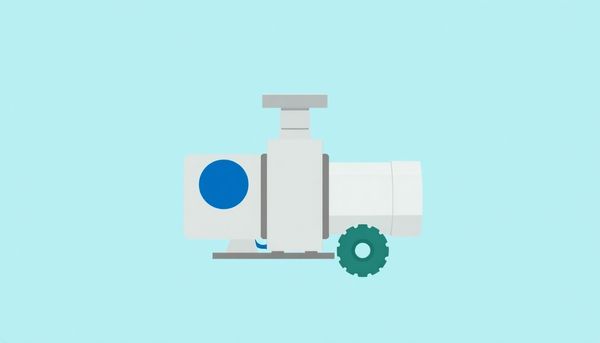
This article provided insights into maintaining your pool. Start your pool care journey today!
Want to become a pool maintenance expert? Our free Pool School course covers everything you need to know about pool care. From basic maintenance to advanced troubleshooting, you'll learn how to:
Join over 10,000 pool owners who have already transformed their pool care routine. Get started with our free Pool School course today!